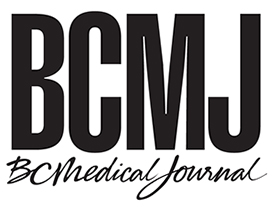

 |
| Dr Eric Cadesky |
Sitting at my grandfather’s typewriter years ago, I heard the click of my fingers on the faded black keys and the clack of letters branding the page. Mistakes happened, but there was white-out. Weeks later I submitted the manuscript in triplicate after visiting the print shop and post office. Thankfully it was accepted—it would have taken months more to resend elsewhere.
Today, I can dictate in any language and my phone transcribes what I say. That same phone books flights, orders pizzas, pays for parking and coffee, takes pictures and videos and shares them, calculates CrCl, connects me to consultant doctors in my area, pushes news, sets the temperature of my home, and plays almost every song ever recorded.
Innovation affects every aspect of our lives: GPS devices replaced maps, we stream shows whenever we want on screens of all sizes instead of watching television as it’s scheduled, airlines send real-time flight updates, and banks are rarely used for banking.
And yet, there’s health care.
While we celebrate innovative successes such as vaccines, laparoscopy, advanced imaging, and safe-injection sites, we lag behind other fields.
I use an electronic medical record, but it doesn’t connect to the hospital or other clinics—even if they use the same platform. Handwritten emergency room notes arrive by mail. Requests for health care services must be faxed on specified forms. When away from the office I cannot complete or even download a death certificate online, but must find a paper copy and, you guessed it, fax it. Prescriptions and laboratory requisitions are written on pieces of paper, resulting in unnecessary repeat patient visits or nonclinical physician work to replace or clarify lost, destroyed, or duplicated forms.
1. Recognize that the health care system and the people it cares for are complex.
Complex systems evolve over time, and changing one part affects others. But we have health care silos rather than system coherence—like co-pilots not talking, each of them trying hard to steer while the destination becomes more difficult to reach. And who is steering? We have advocated for doctors to be in the cockpit, but it’s crowded with government, administrators, health care professionals, and patients all rightfully present with their own values and experiences.
As doctors, we experience complexity daily. An antibiotic may work for one person but not another, or it may cause side effects. How people react to the same infection, treatment, or trauma is variable and necessitates personalized care. Similarly, one community may do well with pooled referrals, hospital-based IT, and service contracts. Other communities may not.
2. Identify privacy as paternalism.
While we argue about the highest standard of privacy, people willingly give up some of this right daily to interact on social media. I take a chance that my banking or personal data will be hacked, but that is a risk I choose in return for the benefits of convenient virtual services. In the same way, let’s create robust information systems and let people assess risks and benefits for themselves. And let’s also remember that fax numbers get misdialed, papers are stolen or dropped, and conversations are overheard. We can aim for perfection, but what we really need is progress.
3. Encourage long horizons and fast failure.
For major health care reform to occur, we need to look many years into the future, where it will grow with expected population needs and technological advances. But political timelines mean that those wishing to stay in office have an incentive to choose safe projects with a high likelihood of short-term success.
Innovation does not behave this way. We learn in many ways, but the nonlinear journey of controlled failure is one of the best. If smoothly working hinges were political, would the inventor of WD-40 have been allowed to fail 39 times? Likewise, how many people have the time, resources, and job security to fail quickly and iterate?
4. It’s about people, always.
Care is better when we empower patients and engage doctors. IT projects rarely fail due to the technology itself, but rather due to poor change management. Change cannot be done to people: we have to be part of it, working alongside others who it will affect.
So let’s promote successes, encourage and learn from failures, focus on stepwise improvement over time, embrace the uncertainty of change, collaborate, and put people and communities first. Maybe then we will see true change in health care, an innovation we all deserve.
—Eric Cadesky, MDCM, CCFP, FCFP
Doctors of BC President
Links
[1] https://bcmj.org/cover/october-2018
[2] https://bcmj.org/author/eric-cadesky-mdcm-ccfp-fcfp
[3] https://bcmj.org/node/6870
[4] https://bcmj.org/sites/default/files/BCMJ_Vol60_No8_pres_comment.pdf
[5] https://bcmj.org/print/presidents-comment/innovation-everywhere-why-isnt-it-here
[6] https://bcmj.org/printmail/presidents-comment/innovation-everywhere-why-isnt-it-here
[7] http://www.facebook.com/share.php?u=https://bcmj.org/print/presidents-comment/innovation-everywhere-why-isnt-it-here
[8] https://twitter.com/intent/tweet?text=Innovation is everywhere. Why isn’t it here?&url=https://bcmj.org/print/presidents-comment/innovation-everywhere-why-isnt-it-here&via=BCMedicalJrnl&tw_p=tweetbutton
[9] https://www.linkedin.com/sharing/share-offsite/?url=https://bcmj.org/print/presidents-comment/innovation-everywhere-why-isnt-it-here
[10] https://bcmj.org/javascript%3A%3B
[11] https://bcmj.org/modal_forms/nojs/webform/176
[12] https://bcmj.org/%3Finline%3Dtrue%23citationpop